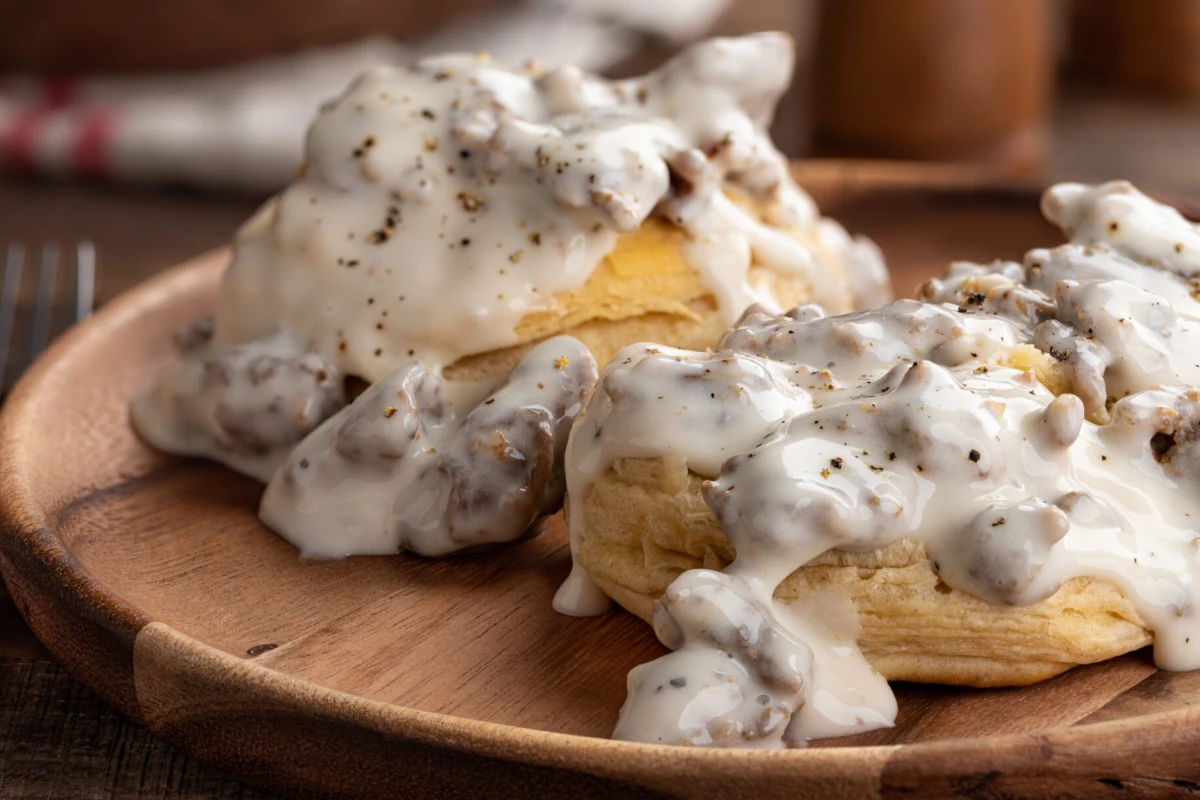There’s something about buttermilk gravy recipe that feels like a warm hug. It’s the ultimate comfort food, turning ordinary meals into something to remember. Whether you’re drizzling it over freshly baked biscuits, creamy mashed potatoes, or a hearty chicken-fried steak, buttermilk gravy adds a touch of soulful flavor that’s hard to beat. In this blog post, we’ll delve into the art of making the perfect buttermilk gravy, offering tips, swaps, and variations to suit every palate.
What is Buttermilk Gravy?
Originating from the heart of Southern cuisine, buttermilk gravy is a testament to the magic of simple ingredients coming together to create something extraordinary. Its rich history and role as a diner classic make it a must-try for anyone looking to explore the depths of traditional American cooking.
Who Should Try This Recipe
This recipe is a call to all comfort food lovers and those yearning to bring a piece of the diner experience into their homes. Whether you’re a seasoned chef or a cooking novice, this guide promises to walk you through creating the perfect buttermilk gravy.
Ingredients
- 1/4 cup (4 tablespoons) unsalted butter
- 1/4 cup all-purpose flour
- 2 cups buttermilk
- Salt, to taste
- Black pepper, to taste
- Optional: Pinch of cayenne pepper or ground nutmeg for added flavor
How To Make Buttermilk Gravy Recipe
- Melt Butter: In a medium saucepan over medium heat, melt the butter. Wait until it starts to foam a little but not brown.
- Add Flour: Whisk in the flour and cook for about 1-2 minutes, stirring constantly. This process cooks the flour and gets rid of the raw flavor, forming what is known as a roux, which will thicken the gravy.
- Incorporate Buttermilk: Slowly pour in the buttermilk while continuously whisking to combine it thoroughly with the roux. Ensure you whisk out any lumps that form for a smooth gravy.
- Season: Add salt and black pepper to taste. If you’re using any optional spices like cayenne pepper or nutmeg, add them now.
- Thicken the Gravy: Continue to cook and stir the mixture over medium heat until the gravy thickens to your desired consistency, usually about 5-10 minutes. If the gravy becomes too thick, you can thin it out by whisking in a little more buttermilk.
- Serve: Once the gravy has thickened, remove it from the heat. Taste and adjust the seasoning if necessary. Serve warm over your choice of dishes.
Nutrition Information (4 servings)
- Calories: 200-250 calories
- Fat: 12-15g (Saturated Fat: 7-9g)
- Carbohydrates: 18-22g
- Protein: 4-6g
- Cholesterol: 35-40mg
- Sodium: 200-300mg (This can vary greatly depending on the amount of salt added and the sodium content of your buttermilk.)
- Dietary Fiber: 0-1g
- Sugars: 8-10g (mostly from buttermilk)
Key Nutrients:
- Buttermilk is a good source of calcium and probiotics, depending on the brand and type.
- Butter provides vitamin A and fatty acids.
Considerations:
- This gravy is high in saturated fat due to the butter, so it’s best enjoyed in moderation, especially for those watching their cholesterol levels.
- The actual sodium content can be controlled by the amount of added salt, so adjust according to dietary needs.
Tips and Tricks
For the perfect consistency, adjust the buttermilk to your liking. If the gravy thickens too much upon cooling, a little extra buttermilk can bring it back to the perfect texture.
Recipe Swaps and Variations
Consider using sausage drippings for a different flavor profile, or add herbs like thyme or sage for a more complex taste.
Storing Leftovers
Buttermilk gravy can be stored in the refrigerator for up to three days, making it a great make-ahead option for busy mornings.
Food and Drink Pairings
This gravy pairs wonderfully with a light, crisp white wine or a rich, creamy stout, balancing its tanginess and richness.
FAQs
Can I use low-fat buttermilk in this recipe?
Yes, you can use low-fat buttermilk without significantly affecting the consistency of the gravy. The flavor might be slightly less rich than when using full-fat buttermilk, but it’s a good option if you’re looking to reduce the overall fat content.
What if I don’t have buttermilk? Can I make a substitute?
Yes, you can make a simple buttermilk substitute by adding 1 tablespoon of lemon juice or white vinegar to 1 cup of milk. Stir and let it sit for about 10 minutes before using. This mixture won’t be as thick as buttermilk, but it will provide a similar tangy flavor to your gravy. For a detailed guide on making your own buttermilk substitute, check out this resource from My Baking Addiction.
Can this gravy be made ahead of time?
Yes, you can make buttermilk gravy recipe ahead of time. Store it in an airtight container in the refrigerator for up to 3 days. When ready to serve, you may need to add a little more buttermilk or water while reheating to achieve the desired consistency, as it tends to thicken when chilled.
How can I fix lumps in my gravy?
To avoid lumps, whisk the flour into the melted butter thoroughly to create a smooth roux before gradually adding the buttermilk. If lumps do form, you can try to whisk vigorously to break them up or strain the gravy through a fine mesh sieve to remove them.
Conclusion
Buttermilk gravy is more than just a sauce; it’s a journey through the heart of comfort food. With this guide, you’re well on your way to mastering a classic that will impress at any meal. Don’t forget to share this recipe and subscribe to our blog for more culinary adventures.
LOOKING FOR MORE?
Whip up more delights with our handpicked recipes!

